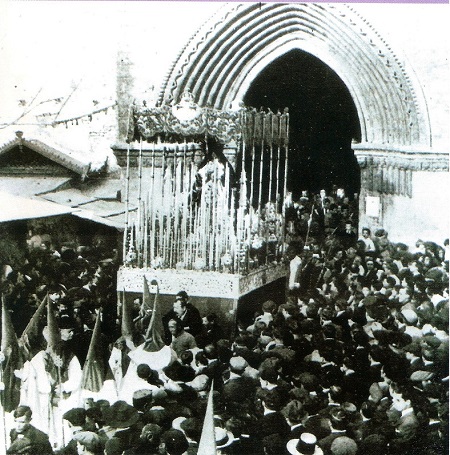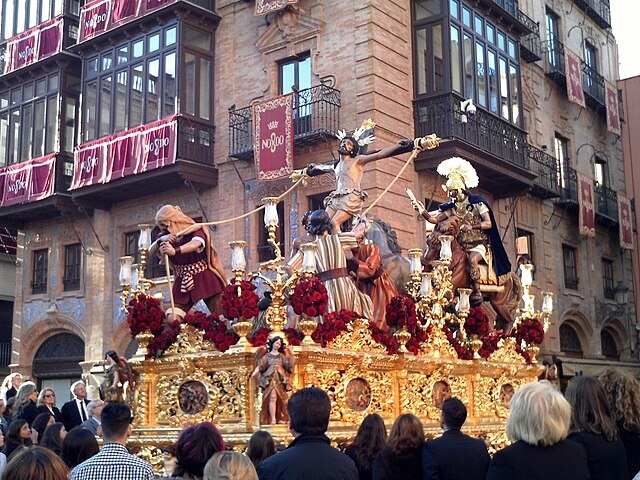Table of Contents
- Mario Castelnuovo-Tedesco Falls in Love with Spain and the Guitar
- The Genesis of the Romancero Gitano
- Baladilla de los Tres Ríos Little Ballad of the Three Rivers
- La Guiterra The Guitar
- Puñal Dagger
- “Prócesion” Overview
- Paso Float (in a procession)
- Saeta Song of Penitence
- Memento Memento
- Baile Dance
- Crótalo Castanet (also rattlesnake, rattler)
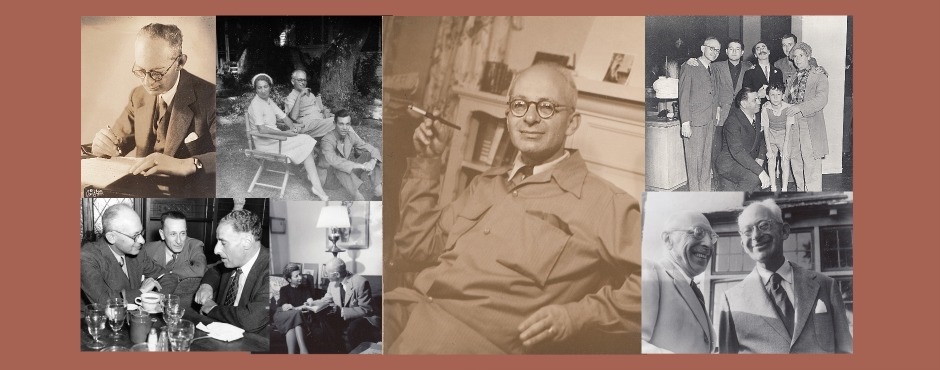
Mario Castelnuovo-Tedesco Falls in Love with Spain and the Guitar
How likely is it that an 18-year-old Italian Jewish boy was given a trip to Spain as a graduation gift by his parents and fell in love with the country even though he never returned? That seems to have indeed happened to the young Mario Castelnuovo-Tedesco, so much so that “It was in Spain, as nowhere else that he felt at home…the experience left him with deep impressions that would one day be reflected in his music.”
Indeed, Castelnuovo-Tedesco is a completely fascinating character, who lived a remarkable life even as he dealt with the traumas of bad health, anti-Semitism, and a total uprooting of his life. There is no way I can deal with his biography in any thorough way at all, but I’d encourage you to at least read the Wikipedia article about him if he sounds interesting to you. (But I will include the tidbit here that his hyphenated last name came about because of an inheritance requirement put on his grandfather. You’ll see in the following material that sometimes I just use the initials of his last name.) It’s fascinating to note that a chance meeting with the Spanish guitarist Andrés Segovia at a music festival in Venice sparked C-T’s eventual composition of over 100 works for the guitar, an instrument he knew nothing about and had never played before this point. But for some reason Segovia asked the composer to write a piece for him. C-T said yes at the time, but later had second thoughts:
Dear Segovia: It would be a great pleasure to write something for you, because I have had the occasion to admire you many times. However, I must confess that I do not know your instrument and I do not have the remotest idea on how to compose for it.
But the great guitarist persisted, encouraging the composer to study other works for the guitar, and eventually C-T sent along his “Variazioni attraverso I secoli” (“Variations Across the Centuries”). Segovia replied that: “It is the first time I have met a musician who understands immediately how to write for the guitar.”
The Genesis of the Romancero Gitano
Castelnuovo-Tedesco also became very interested in the poetry of the great Spanish writer Federico Garcia Lorca, who had produced plays and poetry and greatly influenced the writing of his country before he was assassinated in 1936. The composer chose nine poems from Lorca’s collection Poema del Cante Jondo (Poems of the Deep Song) to set for chorus and guitar, naming his own work, somewhat confusingly, Romancero Gitano (Gypsy Romances), which is also the name of a different Lorca poetry collection, one that does not include the poems C-T used. I hope that’s clear. And he left the poems in their original Spanish:
Castelnuovo-Tedesco did not try to translate the original language of the poems to his native language because he believed that “translations of poetry are almost ‘betrayals’. Even if there is not a betrayal of the contents, there is a betrayal of rhythm or form, and these are poetic elements too precious and essential to neglect.”
It’s the old trade-off: do you keep the original language, or do you translate it, when writing or performing vocal texts? How do you balance the loss of poetic word choice with the loss of understanding? And what if you know that your work will be performed in many different countries? Are you going to provide a different translation for each country? So it’s probably best to leave the work as is and then to do all you can to provide some kind of road map for the performers and the audience. Here in this post I’m trying to provide such a map, and of course there are always provisions you can make in the actual performance. I applaud mightily the use of translations projected over or beneath the stage at opera performances, and of course in concert venues the printed programs or some sort of screen projection can be used to great effect.
We poor beleaguered singers have to do our best to use correct pronunciations and to have some understanding of exactly what we’re singing, not just the word-for-word translations but also the emotive power of the words. Narrative poetry that tells a story is much easier to get across than lyric poetry, in which the words may make no logical sense at all but exist only to convey feeling or paint a picture. The poet John Ciardi says in his iconic book How Does a Poem Mean? that “the fact that a good poem will never wholly submit to explanation is not its deficiency but its very life.” The question to ask oneself for the following or any other poems is not “what’s a summary of this poem’s logical meaning?” but “what images and emotions are called up in my mind as I read it?” And indeed Castelnuovo-Tedesco must have chosen the poems that he did as a result of how they appealed to him in that way. He says in his autobiography that:
I started instead as usual, with the original text, and I found it absolutely fascinating; fresh, free, full of fantasy–just what I needed! These poems took me back, in memory, to the Spain I had seen in 1913 [when he was 18], and I had loved so much; though Spanish remembrances appear in my music at every step. . . . And everywhere, this “sensation” of the land of Spain . .the dry Castile, the pale olive trees, the perfume of orange trees in Andalusia – and, along the coast, the sea which laps the shore, with vibrations, almost. . . guitar-like!
For each of the poems I will provide the original Spanish plus a translation that consists of my own choices among the several that are available, including some alternate word choices. Then, not as anything definitive but simply as an attempt at clarification, I’ll provide some commentary or background. If your choir isn’t singing all of the songs, feel free to pick and choose. (But they’re all fascinating!)
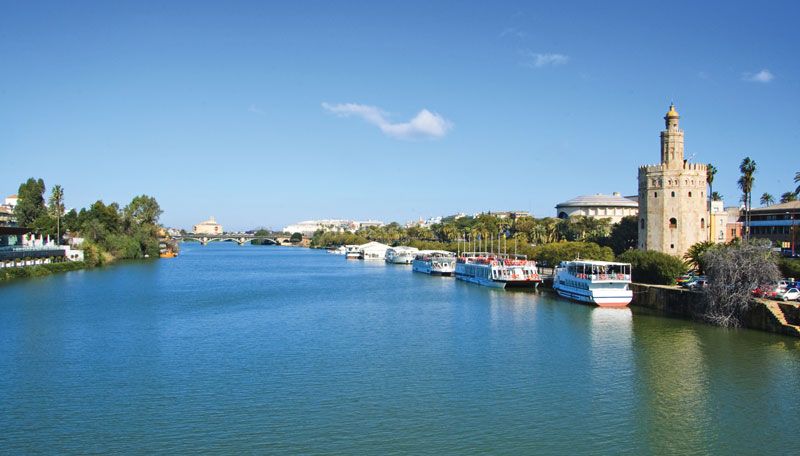
Baladilla de los Tres Ríos
Little Ballad of the Three Rivers
| El río Guadalquivir va entre naranjos y olivos. Los dos ríos de Granada bajan de la nieve al trigo.¡Ay, amor, que se fue y no vino! El río Guadalquivir
Para los barcos de vela,
¡Ay, amor,
Guadalquivir, alta torre ¡Ay, amor, Quién dirá que el agua lleva !Ay, amor, Lleva azahar, lleva olivas, ¡Ay, amor, |
The Guadalquivir River flows through orange and olive trees; The two rivers of Granada descend from the snow to the wheat.O, love, which left and did not return!The Guadalquivir River has banks [beards] of garnets. The two rivers of Granada: one of tears, the other of blood. O, love,
For sailing ships,
O, love,
Guadalquivir, high tower O, love, Who can say if the water carries O, love, Carry orange blossoms, carry olive leaves, O, love, |
For this first piece the composer says, “In the ‘Baladilla de los tres rios,’ the two twin rivers of Granada, the Dauro and the Genii [are] shown, in contrast to the majestic Guadalquivir of Seville.” Guadalquivir can carry ships; the two smaller rivers carry only sighs from the past. Indeed, while there is a modern, bustling city of Granada, Lorca must have been thinking of Granada’s dark and violent past, when three groups, Muslims, Jews and Roman Catholics, struggled for dominance. The great castle of The Alhambra at Granada was built by Islamic rulers starting in the mid-1200’s, but by the end of the 1400’s Islamic rule was over. (Actual date is 1492–which you may or may not remember as the year in which Columbus sailed the ocean blue, under the sponsorship of the same Spanish rulers who forced out the Muslims: Ferdinand and Isabella.) Today that great castle stands empty of its creators but full of tourists. Dauro (modern spelling “Darro”) and Genil empty into the Guadalquivir as it flows to Seville and on to the sea. Lorca implies that they have no life of their own in the present: while the great river has a high tower and runs through stands of orange trees, the two smaller rivers have only small, deserted towers, set among stagnant ponds or marshes. Perhaps, Lorca may imply, if you stand and listen to the smaller rivers you can actually hear cries or screams from the past, as the conquered religious minorities were subject to persecution, execution, or exile. Thus the rivers carry sorrow or tears and blood, not commerce.
A couple of explanations may be helpful here:
1) The two smaller rivers flow “from the snow to the wheat,” a reference to the Sierra Nevada mountains where the Genil river originates and is joined by the Darro. “Sierra” literally means “saw,” referring to the jagged peaks of the mountains, and “nevada” means “snowy.” Lorca seems to contrast the orange and olive orchards along the Guadalquivir, crops strongly associated with Spain, with the wheat fields through which the two lesser rivers flow. While wheat is a major Spanish crop, it certainly doesn’t have the glamor of orange and olives.
2) The phrase “banks of garnets” (the Spanish “barbas” literally means “beards”) seems to refer to the mineral riches around the Guadalquivir, as “garnets” comprise just one variety of gemstone among many found in Spain. I thought at first that the line referred to garnet-colored flowers, but that doesn’t seem to be the opinion of the commentators I’ve read. Perhaps the rust-red of the garnet stone was Lorca’s favorite color; perhaps he just liked the sound of the word. Who knows?
As for the repeated, slightly-varied refrain about departed love, Lorca is probably thinking of the departed, never-to-be-regained past, not some lost romantic attachment. He uses the image of floating olive leaves and orange blossoms being carried out to the sea, never to return, as an echo of that idea.
I’ll leave it there, for you to make your own emotional connections to the words of the poem.
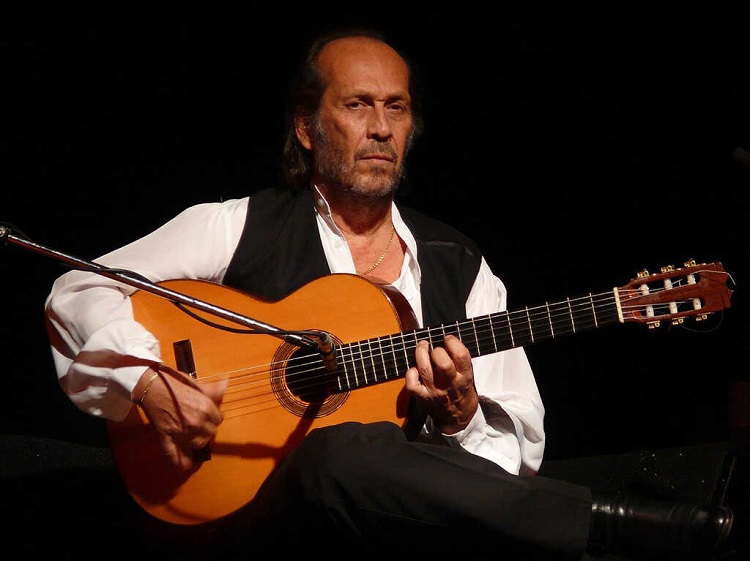
La Guiterra
The Guitar
| Empieza el llanto de la guitarra. Se rompen las copas de la madrugada. Empieza el llanto de la guitarra. Es inútil callarla. Es imposible callarla. Llora monótona como llora el agua, como llora el viento sobre la nevada. Es imposible callarla. Llora por cosas lejanas. Arena del Sur caliente que pide camelias blancas. Llora flecha sin blanco, la tarde sin mañana, y el primer pájaro muerto sobre la rama. ¡Oh guitarra! Corazón malherido por cinco espadas. |
The weeping [sobbing] begins of the guitar. Broken [Smashed] are the goblets [wineglasses] of dawn. The weeping begins of the guitar. It is useless to quiet it. It is impossible to quiet it. It cries monotonously like the water cries, like the wind cries over the snowcaps. It is impossible to quiet it. It cries for things distant: Sand of the hot South that asks for white camellias. It cries like an arrow without target, like the evening without morning, and like the first dead bird on the branch. O, guitar! Heart wounded by five swords. |
The guitar, used in playing flamenco and/or gypsy music, is so strongly associated with Spain that it’s sometimes called its “soul.” This type of music usually sounds “minor” to our modern ears, and its style has been heavily influenced by Arabian and Moroccan music. I include a very interesting video at the end of this post which lays out the various aspects of this music, if you’d like more information on this rather technical topic. Here I’ll just point out that flamenco music has some aspects in common with the blues, and that its harmonies were often written specifically for the guitar. Also, the topics of flamenco usually center around relationships of men and women, and the guitar itself is seen as female.
The poet sees guitar music as an expression of longing than can never be fulfilled. The image of smashed goblets at dawn could refer to an all-night gypsy songfest, with the sun coming up and everyone throwing their empty glasses into the fire. Lorca probably didn’t mean anything that literal, but he could have been inspired by that idea. “Our long night of singing and guitar playing has been ended by the dawn.” Everything has to come to an end, it seems.
The sobbing of the guitar can’t be stopped, though, any more than the running of water or the hissing of wind over snow can be stopped. The poet then launches into a series of ideas about unfulfilled longing expressed by the guitar: the hot desert longing for cool white camellias (which need water and shade); the arrow speeding through the air but without any target, almost as if it’s been shot at random; the evening that will never turn into morning; the dead bird on the branch that perhaps announces the beginning of winter but carries no promise of spring (this last one is my wild extrapolation). Just let the images play out in your mind as you read, listen or sing. There’s no one right interpretation. My favorite image is that of the arrow, hopelessly longing for a destination as it flies.
I was absolutely determined to figure out what the “five swords” reference meant. Yes, yes, I know–poems can’t be boiled down to logical summaries, etc., etc. But Lorca must have meant something by the word “five.” I wasn’t finding anything helpful, so I thought, well, maybe it means the five strings of the guitar as they stretch over the central sound hole, or heart, of the instrument. Only one problem: most guitars, including Spanish ones, have six strings, not five. One commentator just said that the guitar was moaning or sobbing like someone grievously wounded by several sword cuts. Yes, but why five? Well, Lorca did have a real grounding in Roman Catholic doctrine and imagery, as explained below in the “procession” poems. And Christ had five wounds on the cross. But no. Finally the obvious answer turned up, one which I should have figured out on my own: the five swords are the five fingers of the guitarist, stabbing the guitar as he plays.
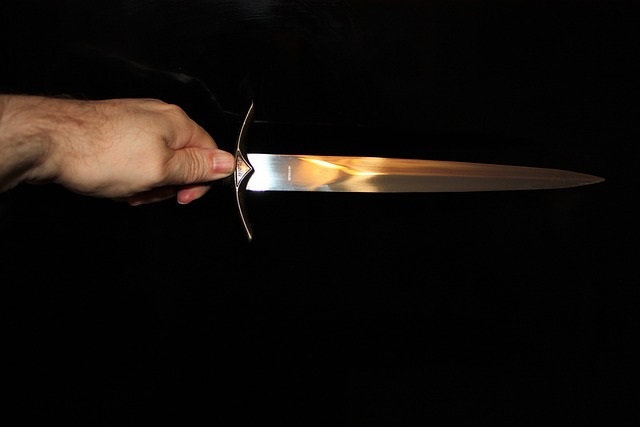
Puñal
Dagger
| El puñal entra en el corazón, como la reja del arado en el yermo. No. No me lo claves. No. El puñal, como un rayo de sol, incendia las terribles hondonadas. No. No me lo claves. No. |
The dagger enters the heart, like the blade of the plow in the earth. No. Do not stab me. No. The dagger, like a ray of the sun burns the terrible hollows. No. Do not stab me. No. |
You can make the “dagger” represent anything you want it to: unrequited love, or an unreached goal, or depression, or misfortune. The image of the plow entering the earth is both clear and violent, fitting in beautifully with the idea of a physical or metaphysical dagger entering the heart. But what on earth are “the terrible hollows”? The Spanish word “hondonada” means “hollow, dip or depression,” so there’s no additional meaning to be had from the translation. All I can suggest here is that Lorca is using the word in several senses, the least of which is a literal shallow valley, although that idea can be a starting point. There’s something kind of menacing about the word itself: “We lived down in the hollow,” for instance. A post on the question-and-answer site Quora says, “It’s the low spot, and one without good vision, with the only way out being climbing up, being down in the hollow/ holler means being in a difficult position but it can also mean being hidden.” Agatha Christie had a mystery novel titled The Hollow. Also (tip of the hat to my brother-in-law), what about “The Legend of Sleepy Hollow”? The story says, “Certain it is, the place still continues under the sway of some witching power, that holds a spell over the minds of the good people, causing them to walk in a continual reverie.” I doubt that Lorca had ever read this American short story (and he certainly couldn’t have read Agatha Christie without the power of time travel), but it’s very telling that the word itself seems to be consistently associated with darkness, evil, or secrecy. What associations does the word have for you?
“Prócesion” Overview
Note: C-T combined the following three poems into one section of the Romanceros, but I’m commenting on each one individually. Thus the mismatch between the number of poems vs. the actual number of sections in the work. He says in his autobiography:
In the “Procesion” . . . I joined three songs one after the other: “procesion,” “paso,” and “saeta”–the souvenir of those strange religious processions, macabre, and at the same time, gaudy (as I had seen them in Seville and Saragossa) in which people carry in the processions, together with flowers, prayers and incenses, images of Christ (usually dry and carrying awful wounds) and of the Madonna (covered with previous brocades and jewels —followed by the wooden statues of the Guards (Paladins) of Carlo Magno or of Ferdinando and Isabella the Catholic, grotesque figures, as in a Carnival.
You can see these characteristics of the processions in the two photographs below, one from perhaps early in the 20th century (no date is given for the actual photograph but only for the upload) and one from the present.
Prócesion
Procession
| Por la calle vienen extraños unicornios. ¿De qué campo, de qué bosque mitológico? Más cerca, ya parecen astrónomos. Fantásticos Merlines y el Ecce Homo, Durandarte encantado. Orlando furioso |
Through the street come strange unicorns. From what field, from what mythological wood? Closer, they seem like astronomers Fantastic Merlins, and the Ecce Homo, [Jesus wearing crown of thorns] the enchanted Durandarte, the furious Orlando |
This poem is extremely puzzling until you look at the images of Spanish Easter processions. The “unicorns” are the penitents wearing the hoods with long pointed tops. And yes–if these hoods and hats are white, they look just like the outfits of the Ku Klux Klan. There’s a long involved story about those hoods; I include a long quotation about them at the bottom of this post. Lorca also calls these hooded figures “Merlins,” “astronomers,” and the names of two knights from medieval tales, Durandarte and Orlando.
The “Ecce Homo” (note that it’s rendered the same in both the Spanish and English, since it’s actually a Latin phrase) refers to the standard depiction of Christ with the crown of thorns, with the wording taken from several of the Gospel accounts of the Crucifixion. Here’s the verse from John 19:5 KJV:
Then came Jesus forth, wearing the crown of thorns, and the purple robe. And Pilate saith unto them, Behold the man!
Paso
Float (in a procession)
| Virgen con miriñaque, virgen de la Soledad, abierta como un immenso tulipán. En tu barco de luces vas por la alta marea de la ciudad, entre saetas turbias y estrellas de cristal. Virgen con miriñaque tú vas por el río de la calle, ¡hasta el mar! |
Virgin in crinoline, virgin of solitude, open like an immense tulip. In your boat of light you go upon the high tide of the city, between turbid saetas [penitent chants] and crystal stars. Virgin in crinoline you go through the river of the street to the sea! |
In the black-and-white photo above you can clearly see the float with the elaborately-dressed figure of the Virgin Mary. There’s not much explanation needed here as far as the actual imagery is concerned. These processions are especially striking at night, when lights are carried.
Saeta
Song of Penitence
| Cristo moreno pasa de lirio de Judea a clavel de España. ¡Miradlo, por dónde viene! De España. Cielo limpio y oscuro, tierra tostada, y cauces donde corre muy lenta el agua. Cristo moreno, con las guedejas quemadas, los pómulos salientes y las pupilas blancas. ¡Miradlo, por dónde va! |
The dark [swarthy, sunburned] Christ passes [becomes a raisin] [is transformed] from the lily of Judea to the carnation of Spain. Behold from where he comes! From Spain. Behold where he goes! |
As C-T himself said, the figures of Christ in the processions are “usually dry and carrying awful wounds,” in stark contrast to the bejeweled and elaborate figures of Mary. Christ is always on a cross, and crucifixion was a particularly horrible and gruesome form of Roman execution. In this poem Lorca emphasizes the idea of the scorching or burning of the sun, as it beats down upon the figure of Christ. And yes, “pasa” can indeed mean “raisin.” Christ has been dried out in the scorching heat as he hangs on the cross. In Judea he was a white lily; in Spain he’s a red carnation, burned by the sun. (Jesus is sometimes called “the lily of the valley” in old Gospel songs, but I can’t imagine that Lorca was familiar with that genre!) Christ is gaunt and perhaps unconscious. Although Lorca ultimately rejected the Roman Catholic Church and Christianity as a whole, his early life showed a very different attitude: “Lorca’s contemporaries confirm that his fascination with the Catholic Church and its rituals began in early childhood and continued throughout his life. . . . Lorca’s mother regularly took him to Mass and that one of his favorite games was ‘playing Mass.'”
And then the procession passes, and the figure of pain and death is gone.
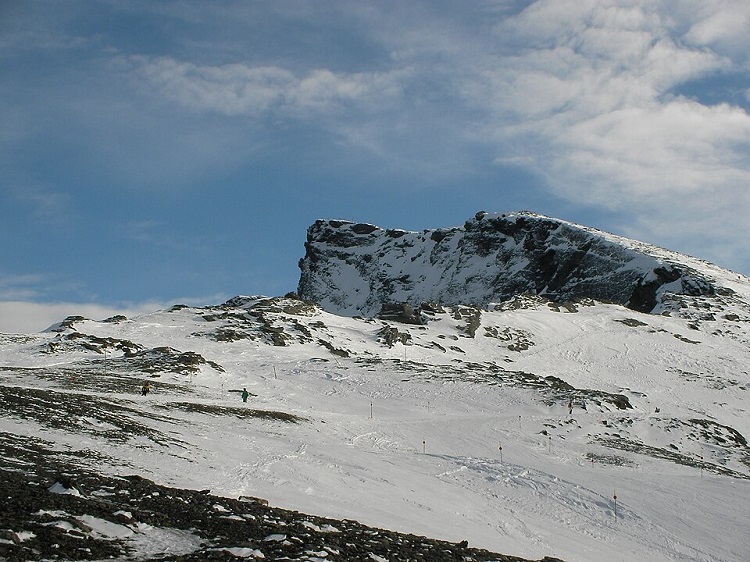
Memento
Memento
| Cuando yo me muera enterradme con mi guitarra bajo la arena. Cuando yo me muera, entre los naranjos y la hierbabuena. Cuando yo me muera, enterradme, si queréis, en una veleta. |
When I die bury me with my guitar under the sand. When I die, under the orange trees and the good herb [spearmint or peppermint]. When I die, bury me, if you wish, in a thin shroud [on a weathervane] [on Mt. Veleta] |
Now why, you may ask, is the picture illustrating this poem the peak of a mountain? Let’s parse it out. First, Lorca says that he (or the poet–not necessarily the same person) doesn’t want an elaborate funeral. “Just bury me in the sand,” he says. I’m reminded of something that the great American composer Morton Lauridsen says in a documentary about his life and work: that he told his boys to just dig a hole on the beach (he owns a small island) and put him in it when he dies. The poet does want to keep his guitar, probably because it’s his most precious possession. Or perhaps he could be buried under orange trees and herbs, a rather evocative combination. Or . . . maybe he could just be wrapped in a sheet, or something cheap and thin. But “veleta” doesn’t mean “thin shroud.” I’m completely baffled as to why the standard translation has that rendering. The word means “vane” or “weathervane.” So I guess they could put his body on a weathervane, to be exposed to the elements. But “Veleta” is also the name of a high mountain peak in the Sierra Nevada, in Granada, which to me is the best translation available. While you couldn’t literally bury someone on a weathervane, you could certainly bury someone on a mountain. The significance of the three burial locations is that they’re all associated with Spain: the desert sand, the orange trees, and the high mountains of the Sierra Nevada.
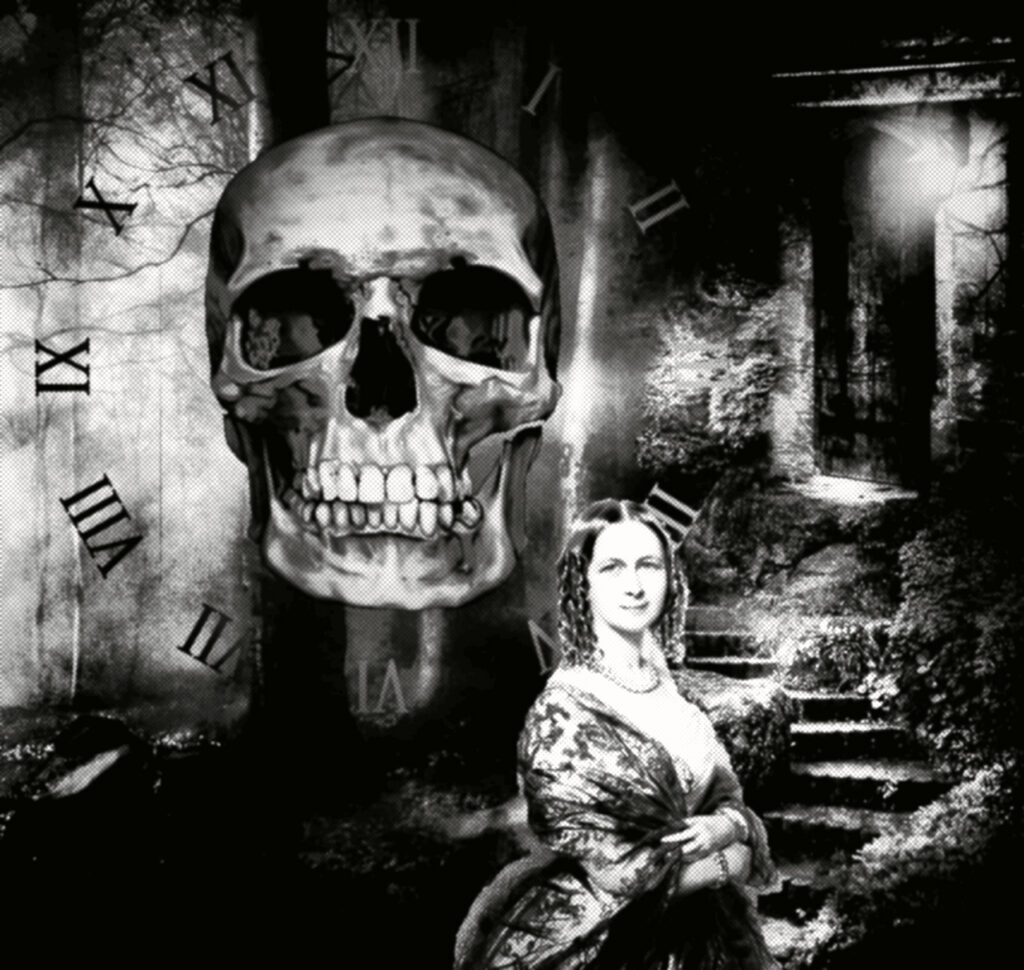
Baile
Dance
| La Carmen está bailando por las calles de Sevilla. Tiene blancos los cabellos y brillantes las pupilas.¡Niñas, corred las cortinas!En su cabeza se enrosca una serpiente amarilla, y va soñando en el baile con galanes de otros días.¡Niñas, corred las cortinas!Las calles están desiertas y en los fondos se adivinan, corazones andaluces buscando viejas espinas. ¡Niñas, |
|
At first you probably thought that this poem was portraying the young, beautiful Carmen in the opera who sings about dancing the seguidilla and drinking Manzanilla at the home of her friend Lillas Pastias, but then you were brought up short by the description of her having “white hair.” The composer said, “in ‘Baile,’ [we see] the
shadow of Carmen while she dances seductive and sinister, by night, through the little streets of Sevilla.” Note that while her eyes are “shining,” they’re doing so not because she’s enjoying herself in the present but because she’s dreaming of past lovers. She’s a weird, ghostly figure, as C-T says, a “shadow.” And there’s a yellow serpent coiled on her head. What’s that all about? I couldn’t find anything about the symbolism of the color yellow except that it’s often seen to represent cheerfulness or the sun, which certainly doesn’t work here. The image of the serpent can have several meanings, with the most logical one that of death. But an intriguing idea is that the snake on Carmen’s head is a reference to Medusa, one of the Greek monsters known as the Gorgons, who turned anyone to stone who looked at her. (The hero Perseus was able to kill her only by looking at her reflection in his shield so he could see her head in order to slice it off.) Apparently there are figures of Medusa through Andalusia, and the idea of warning the children to “draw the curtains” as Carmen passes by would fit with the Medusa image. The children are being warned not to look at her.
But there are those in Andalusia who seek out old “thorns”–regrets or sorrows. The poet senses this tendency as he sees the shadowy Carmen dance.
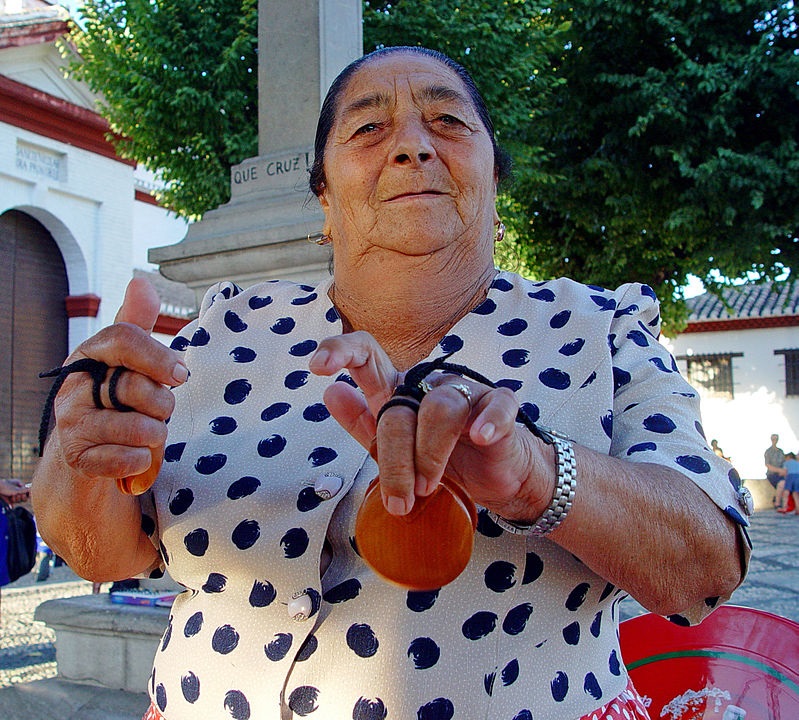
Crótalo
Castanet (also rattlesnake, rattler)
| Crótalo. Escarabajo sonoro. En la araña de la mano rizas el aire cálido, y te ahogas en tu trino de palo. Crótalo. Escarabajo sonoro. |
Castanet. Sonorous scarab. In the spider of the hand you ruffle [curl, ripple] the warm air, and extinguish [drown] yourself on your trill of wood. Castanet. Sonorous scarab. |
Lorca doesn’t seem to have a deeper meaning here beyond the sounds and images themselves. Castelnuovo-Tedesco probably liked the idea of ending his Romanceros with something lighthearted and fun: the sound of the castanets, so associated with Spain and especially flamenco dancing. The word itself, “crótalo,” is (are you ready for this?), “From Ancient Greek κρόταλον (krótalon, ‘clapper, castanet, rattle‘). If you think about it, the idea of rhythmically tapping or striking two sticks together is very simple, with the two halves of the castanet being a logical next step since you can use it with one hand. Most players of the instrument therefore have a castanet in each hand, allowing for all sorts of effects that couldn’t be produced with just one instrument being used at a time.
Lorca is having a ball with his imagery here. A “scarab” is, of course, a beetle, and the shape of a castanet is very like that insect. He may have used the word “scarab” specifically here to reference the Egyptian idea that this insect, in particular the dung beetle. symbolized resurrection (for reasons too complicated to go into here). This particular scarab produces sonorous sound, however, not a ball of dung. The hand of the player is a “spider,” albeit with five legs instead of eight. As he or she plays, the sound waves ripple through the air. As the trill ends, the sound is extinguished.
And with one final exclamation of “Crótalo,” the piece, and the suite, comes to an end.
Here’s a performance video of the entire suite:
Additional information:
I am greatly indebted to two academic papers accessed online:
and
Casteluovo’s Works for the Guitar by Peter Anthony Higham
Here’s the fascinating video I mentioned earlier:
Regarding the hooded hats in the processions, the Israeli news outlet Haaretz says:
Tourists strolling the streets of Spanish or Portuguese cities during Holy Week, the days building up to Easter Sunday, might be taken aback to find processions of men clad head to toe in long robes, wearing conical hoods that cover their faces. They look just like the Ku Klux Klan, but are just Catholic adherents making penitence for the past year’s sins.
Sometimes the capirote identified their wearers’ particular sins by color and insignia. Although public mortification was presumably the point of the practice, over the years, capirote wearers began to make their hoods longer and longer, finally completely covering their faces. Thus their form came about centuries before the advent of the Ku Klux Klan. (“What Does the Official Uniform of the KKK Have to Do With Medieval Easter Penitents?“)

